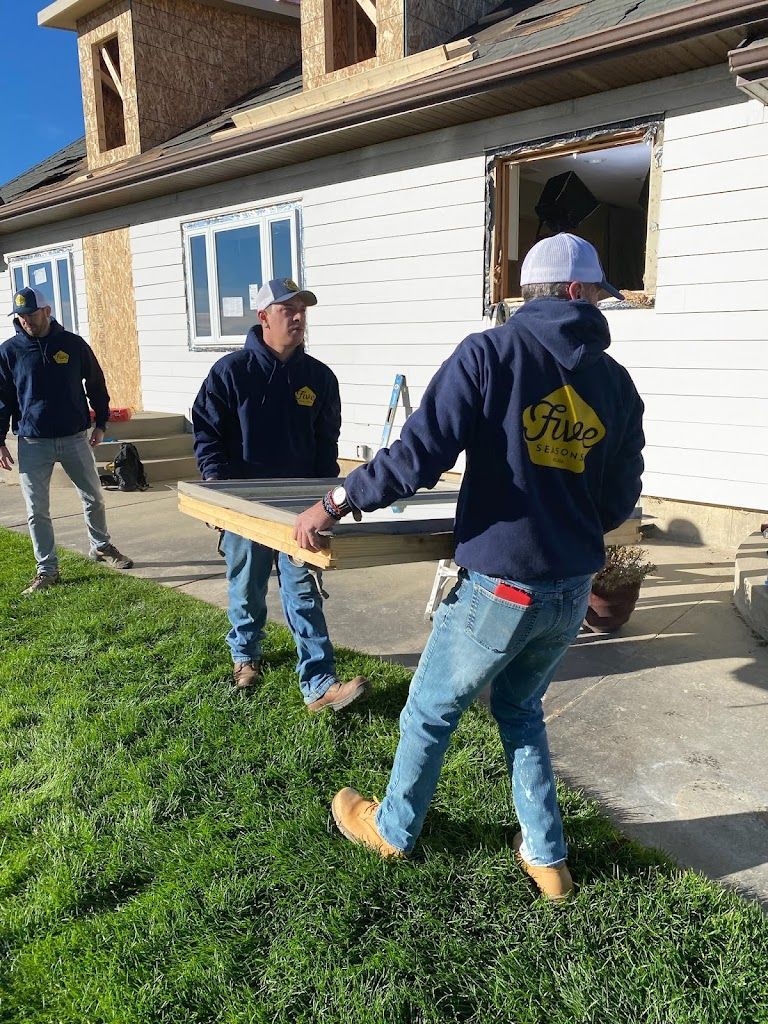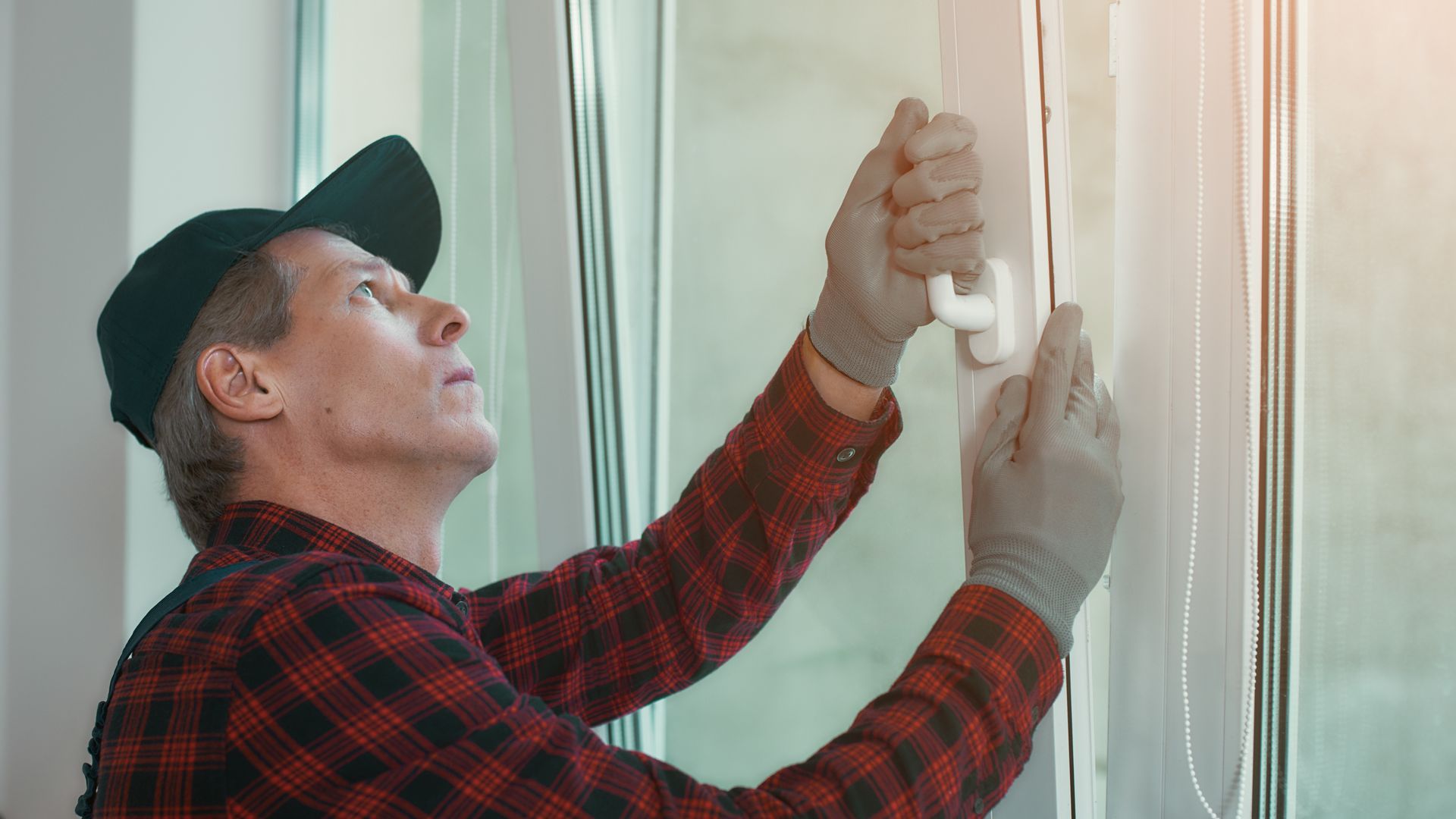Replacement windows last 15-40 years depending on material quality, with vinyl windows lasting 20-25 years, wood windows 15-30 years, fiberglass windows 30-40 years, and aluminum windows 20-30 years. Premium materials and professional installation can extend lifespans significantly beyond these averages.
According to the National Association of Home Builders, properly installed quality replacement windows should provide reliable performance for 20-30 years minimum, with premium materials and regular maintenance potentially doubling service life compared to builder-grade alternatives in challenging climates.
Understanding replacement window lifespan helps homeowners make informed investment decisions and plan for future home maintenance needs. Material choice, installation quality, climate conditions, and maintenance practices all significantly impact how long windows perform optimally. Knowing what to expect from different window types ensures realistic expectations and proper long-term home planning.
Material-Based Lifespan Expectations
Vinyl Window Longevity
Quality vinyl replacement windows typically last 20-25 years with proper installation and maintenance, though premium formulations can extend service life to 30+ years. Vinyl's durability depends heavily on UV stabilizers and impact modifiers that prevent degradation from sun exposure and temperature cycling.
Lower-grade vinyl windows may show signs of wear within 15-20 years, including color fading, seal failures, or frame brittleness. Premium vinyl windows with advanced formulations and multi-chamber designs consistently deliver longer service life and maintain performance throughout their operational lifespan.
Wood and Wood-Clad Performance
Solid wood replacement windows can last 15-30 years depending on wood species, finish quality, and maintenance consistency. Premium hardwoods like mahogany or oak with proper finishing can exceed 30 years, while softwood windows may require replacement sooner without diligent maintenance.
Wood-clad windows combine wood interior aesthetics with durable exterior cladding materials, typically lasting 25-35 years. The exterior cladding protects the wood from weather damage while maintaining the natural beauty and insulation properties that make wood windows attractive to homeowners.
Quality Factors Affecting Lifespan
Manufacturing Standards and Materials
Premium replacement windows use superior materials including reinforced frames, advanced weatherstripping, and high-quality hardware that significantly extend operational life. Quality manufacturers invest in research and testing to ensure their products meet or exceed expected lifespan performance.
Lower-cost windows often use thinner materials, basic hardware, and minimal weatherproofing that may fail prematurely. The difference between budget and premium windows becomes apparent over time, with quality products maintaining performance and appearance long after cheaper alternatives require replacement.
Glass and Glazing System Durability
Modern replacement windows feature advanced glazing systems with low-E coatings, multiple panes, and gas fills that enhance both performance and longevity. Quality glazing systems maintain their thermal performance and clarity throughout the window's service life.
Seal failures between glass panes represent one of the most common window problems, typically occurring 10-20 years after installation in quality windows. Premium glazing systems with superior sealants and construction techniques can prevent seal failures for 25+ years in demanding climates.
Climate and Environmental Impact
Weather Conditions and Regional Variations
Harsh climates with extreme temperatures, high UV exposure, or frequent severe weather can reduce replacement window lifespan by 20-30% compared to moderate climate conditions. Coastal areas with salt exposure, desert regions with intense UV, and northern climates with freeze-thaw cycles present unique challenges.
Quality windows designed for specific climate zones incorporate materials and construction techniques that address regional environmental stresses. Choosing windows rated for local climate conditions helps ensure optimal lifespan and performance throughout the service period.
Maintenance Requirements by Environment
Different climates require varying maintenance schedules to maximize replacement window lifespan. Humid climates may require more frequent cleaning and inspection for mold or moisture issues, while dry climates demand attention to seal integrity and UV damage prevention.
Regular maintenance including cleaning, lubrication, and weatherstripping inspection can extend window life by 5-10 years beyond normal expectations. Neglected windows in any climate will fail prematurely, while properly maintained windows often exceed manufacturer lifespan estimates.
Signs It's Time for Replacement
Performance Decline Indicators
Window replacement becomes necessary when energy efficiency degrades significantly, typically indicated by drafts, condensation between panes, or difficulty operating windows. These performance issues usually develop gradually over the final 25% of a window's expected lifespan.
Visible damage including cracked frames, failed weatherstripping, or damaged hardware may warrant replacement even if windows haven't reached expected lifespan. Safety and security concerns should always take precedence over lifespan considerations when evaluating replacement needs.
Cost-Benefit Analysis for Replacement
When repair costs exceed 50% of replacement costs, or when windows require frequent repairs, replacement typically provides better long-term value. Energy savings from modern replacement windows can also justify early replacement of inefficient older units.
Consider replacement when windows no longer meet current energy codes or when aesthetic updates become important for property value. Modern replacement windows offer significant performance improvements that may justify replacement before technical end-of-life occurs.
Energy Efficiency Degradation Over Time
Thermal Performance Decline Patterns
Replacement windows experience gradual energy efficiency decline throughout their service life, with most windows losing 10-20% of their thermal performance in the final third of their expected lifespan. Seal failures between glass panes represent the primary cause of efficiency loss, allowing insulating gas fills to escape and reducing overall thermal resistance.
Quality windows maintain stable energy performance for the first 15-20 years, then may experience accelerated efficiency decline as seals age and weatherstripping deteriorates. Premium windows with superior construction often maintain thermal performance for 25+ years before significant degradation occurs.
Cost-Benefit Analysis for Energy-Based Replacement
When replacement windows lose significant thermal performance, increased energy costs may justify replacement before complete failure occurs. Windows that have lost 20-30% of their efficiency can increase heating and cooling costs by $200-500 annually in typical homes.
Modern replacement windows offer 40-60% better energy efficiency than windows installed 20+ years ago, potentially providing substantial utility savings that offset replacement costs over 10-15 years. Energy-based replacement decisions should consider total cost of ownership including utility savings, comfort improvements, and avoided repair costs.
Maximizing Window Lifespan
Professional Installation Impact
Quality installation by experienced professionals can extend replacement window lifespan by 25-50% compared to poor installation practices. Proper installation includes correct sizing, adequate insulation, appropriate flashing, and quality weathersealing techniques.
Installation quality affects every aspect of window performance including energy efficiency, water resistance, and operational smoothness. Professional installation also ensures warranty coverage that protects the window investment throughout its expected service life.
Maintenance Best Practices
Regular cleaning, hardware lubrication, and weatherstripping inspection help maintain optimal window performance throughout the service life. Annual maintenance takes minimal time but can prevent premature failures and extend operational life significantly.
Professional maintenance services can identify potential issues before they become serious problems, often preventing costly repairs or premature replacement. Establishing maintenance relationships with qualified service providers helps protect replacement window investments over their entire lifespan.
When considering replacement windows, understanding the specialized options available for unique architectural requirements can help ensure optimal longevity and performance. For comprehensive information about custom window solutions and their installation requirements, explore our detailed guide: 🔗Complete Guide to Custom Window Installation: From Design to Final Installation

People Also Ask About Replacement Window Lifespan
1. What are the first signs that replacement windows need to be replaced?
The earliest signs include drafts around window frames, condensation forming between glass panes, and difficulty opening or closing windows smoothly. These issues typically appear in the final 5-10 years of a window's service life and indicate declining performance.
Energy bills that increase without other obvious causes often signal window efficiency loss. You may also notice interior condensation on glass surfaces during cold weather, which suggests seal failures or inadequate thermal performance that warrants replacement consideration.
Visible damage like cracked frames, damaged weatherstripping, or warped sashes are clear indicators that replacement time is approaching. While some repairs may be possible, multiple issues occurring simultaneously usually indicate that replacement provides better long-term value than continued repairs.
2. Do expensive replacement windows really last longer than budget options?
Premium replacement windows typically last 30-50% longer than budget alternatives due to superior materials, better manufacturing standards, and enhanced weatherproofing systems. Quality windows use thicker frames, advanced weatherstripping, and superior hardware that maintain performance over extended periods.
The difference becomes most apparent after 15-20 years when budget windows often show significant wear while premium windows continue performing optimally. Premium windows also maintain their appearance better, with color stability and frame integrity that budget options may not provide.
However, proper installation and maintenance matter more than price alone. A well-installed budget window with regular maintenance may outperform a premium window that's poorly installed or neglected. The key is balancing quality materials with professional installation and consistent care.
3. How does climate affect how long replacement windows last?
Extreme climates can reduce window lifespan by 20-40% compared to moderate conditions. High UV environments cause material degradation, while freeze-thaw cycles stress seals and frames. Coastal areas with salt exposure accelerate corrosion in metal components.
Hot, dry climates are particularly challenging for window seals and weatherstripping, which can become brittle and fail prematurely. Cold climates with significant temperature swings stress window materials through constant expansion and contraction cycles.
Choosing windows specifically rated for your climate zone helps ensure optimal lifespan. Many manufacturers offer climate-specific formulations and construction techniques that address regional environmental challenges, potentially extending service life even in harsh conditions.
4. Can regular maintenance really extend replacement window lifespan?
Proper maintenance can extend window lifespan by 5-10 years beyond normal expectations. Regular cleaning prevents dirt buildup that can damage seals and hardware, while lubrication keeps operating mechanisms functioning smoothly throughout the service life.
Annual inspection allows early detection of minor issues before they become major problems. Replacing weatherstripping, adjusting hardware, or resealing minor gaps costs far less than premature window replacement and maintains optimal performance.
Neglected windows typically fail 20-30% sooner than well-maintained units. Simple maintenance tasks like cleaning tracks, lubricating hinges, and checking weatherstripping take minimal time but provide significant return on investment through extended window life.
5. Is it worth replacing windows before they completely fail?
Replacing windows before complete failure often provides better value through improved energy efficiency, enhanced comfort, and avoided emergency replacement costs. Modern windows offer significant performance improvements that may justify replacement even when existing windows still function.
Energy savings from new windows can offset replacement costs over time, particularly when replacing windows more than 20 years old. Planned replacement also allows better timing, contractor selection, and financing options compared to emergency situations.
Consider replacement when repair costs become frequent or when windows no longer meet current energy standards. Proactive replacement during favorable weather and contractor availability typically costs less and provides better results than waiting for complete failure.
Our Take
At Five Seasons Windows & Doors, we've observed replacement window performance across decades of Colorado installations and consistently see that material quality and installation expertise are the primary factors determining actual service life. While manufacturer estimates provide general guidance, real-world performance depends heavily on these controllable factors.
Our experience shows that homeowners who invest in quality materials and professional installation typically enjoy 25-40% longer service life compared to those who prioritize initial cost savings. This difference becomes particularly pronounced in Colorado's challenging climate, where temperature extremes and UV exposure test window materials continuously.
We recommend focusing on total cost of ownership rather than initial purchase price when selecting replacement windows. Premium materials with 30-40 year lifespans often provide better value than budget options requiring replacement every 15-20 years, especially when considering energy savings and reduced maintenance requirements over the extended service period.
Final Takeaway
Replacement window lifespan varies significantly based on material quality, installation expertise, climate conditions, and maintenance practices. While general estimates provide useful planning guidance, actual performance depends on the specific combination of these factors in your unique situation.
Quality materials consistently deliver longer service life and better performance throughout the operational period. Professional installation ensures optimal performance from day one and helps prevent premature failures that can significantly reduce actual lifespan compared to manufacturer estimates.
Understanding these factors helps homeowners make informed decisions about replacement window investments and develop realistic expectations for long-term performance. By prioritizing quality materials, professional installation, and regular maintenance, you can maximize your replacement window investment and enjoy decades of reliable performance and energy efficiency.
Get Started Today
Five Seasons Windows & Doors is Colorado’s top-rated local window company with 230+ 5-star reviews. We offer expert advice, no-pressure quotes, and flexible project options — including phased installs. Schedule your consult today.




